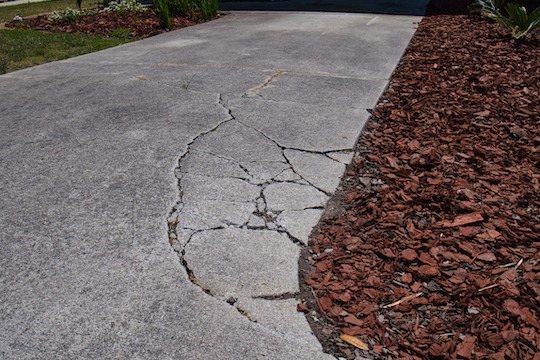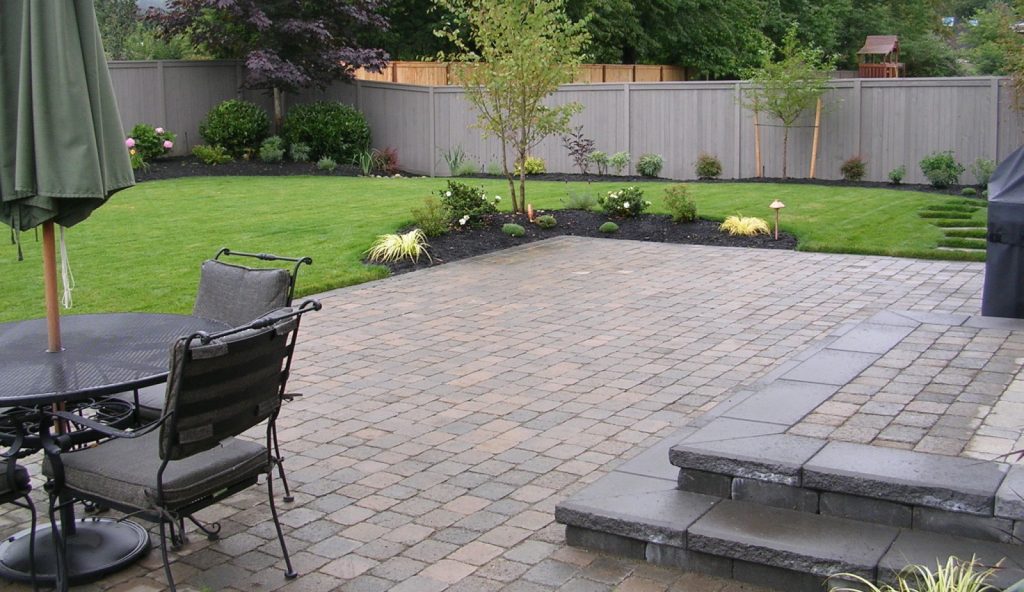Ask a driveway contractor: There are some that can be saved with a few fixes, and others that are more economically replaced. A few tips on what to look for.
In a sense, the homeowner who has a driveway with problems is much like United States Supreme Court Justice Potter Stewart. The judge was asked in 1965 to define what obscenity is, and he replied, “I know it when I see it.”
The ailing driveway, be it made of asphalt or concrete, shows its signs of age, wear and tear in obvious ways: it will have cracks (especially a problem with concrete driveways), potholes (more of an asphalt pavement problem), drainage issues such as puddles or water accumulating in the wrong places adjacent to the pavement, or an overall weathered appearance that lends itself to a tired aesthetic. You know it when you see it.
So the hard question for the homeowner or property manager is what to do about it? Is it more economically smart to repair or replace your driveway? To answer that question, it may be time to contact a local driveway contractor.
Repair the driveway when …
If your problem is cracking, give it the ¼-inch test. If the crack is less than ¼ inch, you might be able to repair it with crack seal. This works best with asphalt, less so with concrete. The problem with concrete is it is laid in large, single slabs and cracks tend to affect the entire slab – and the crack repair is visibly obvious.
Cracks are most problematic in climates that experience freeze-thaw cycles. So small cracks in asphalt can and should be filled to prevent bigger problems later.
Drainage issues can be a bigger problem, but in some cases the use of strip drains (where the water accumulates), curb additions, and underground drainage pipes or at-grade French drains might be the solution if the topography allows it. Just keep in mind how water can affect everything, including nearby buildings.
Weathering is mostly about how asphalt lightens with age and sometimes the emulsifier (bitumen) will wear away on the surface. A topcoat seal of some kind is a repair that can extend the life of the asphalt and freshen up the look at the same time.
Replace the driveway when…
The average life of an asphalt driveway, if maintained properly and laid correctly in the first place, is about 20 years. After that, it’s a good bet you’ll need to replace it.
The average life of a concrete driveway is a bit longer, about 25 years.
As mentioned above a crack wider than ¼ inch is a sign a replacement should happen sometime soon. The issue with cracks is that they allow moisture to penetrate to the subsurface, which leads to erosion and collapse (potholes) on the surface.
Where drainage issues are major, such as when they affect nearby buildings, the problems go deeper than the surface of the pavement. Not only should the asphalt or concrete be replaced, but everything that has to do with drainage needs to be addressed, perhaps by an engineer or other drainage expert.
Rethink your driveway surface
If you’re going to replace your driveway, it might be time to rethink the type of pavement material used altogether. Though the industry name might be “asphalt contractor”, these companies typically provide other hardscape services besides pavement and concerete. It might add a great deal of curb appeal if not absolute value to instead use brick pavers (concrete or clay, the latter being more resilient to aging), natural cobblestones (perhaps to complement a vintage home), stabilized decomposed gravel (inexpensive, but there are annual maintenance tasks), or tinted concrete (all kinds of colors are possible). Driveways don’t all have to look the same anymore.






